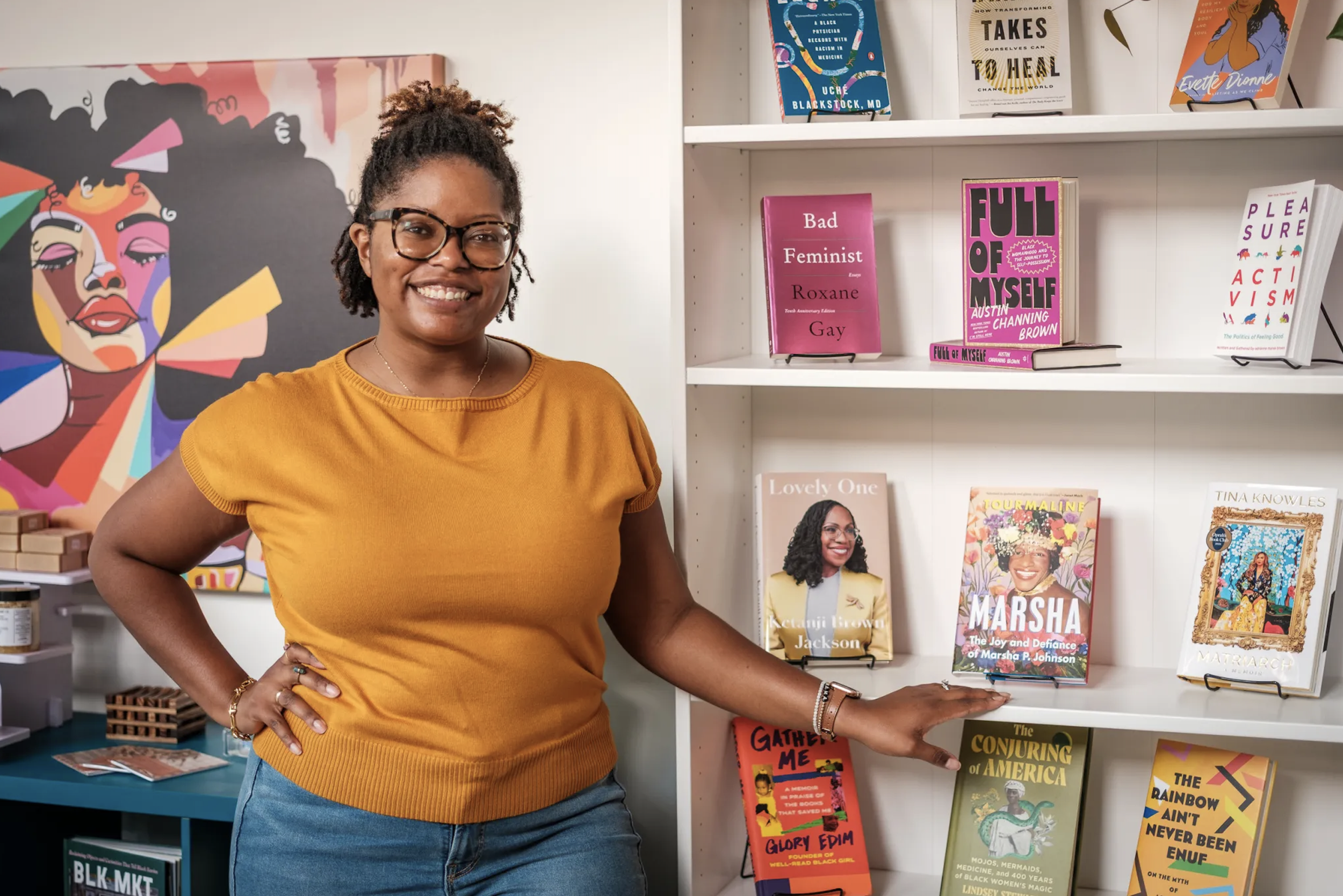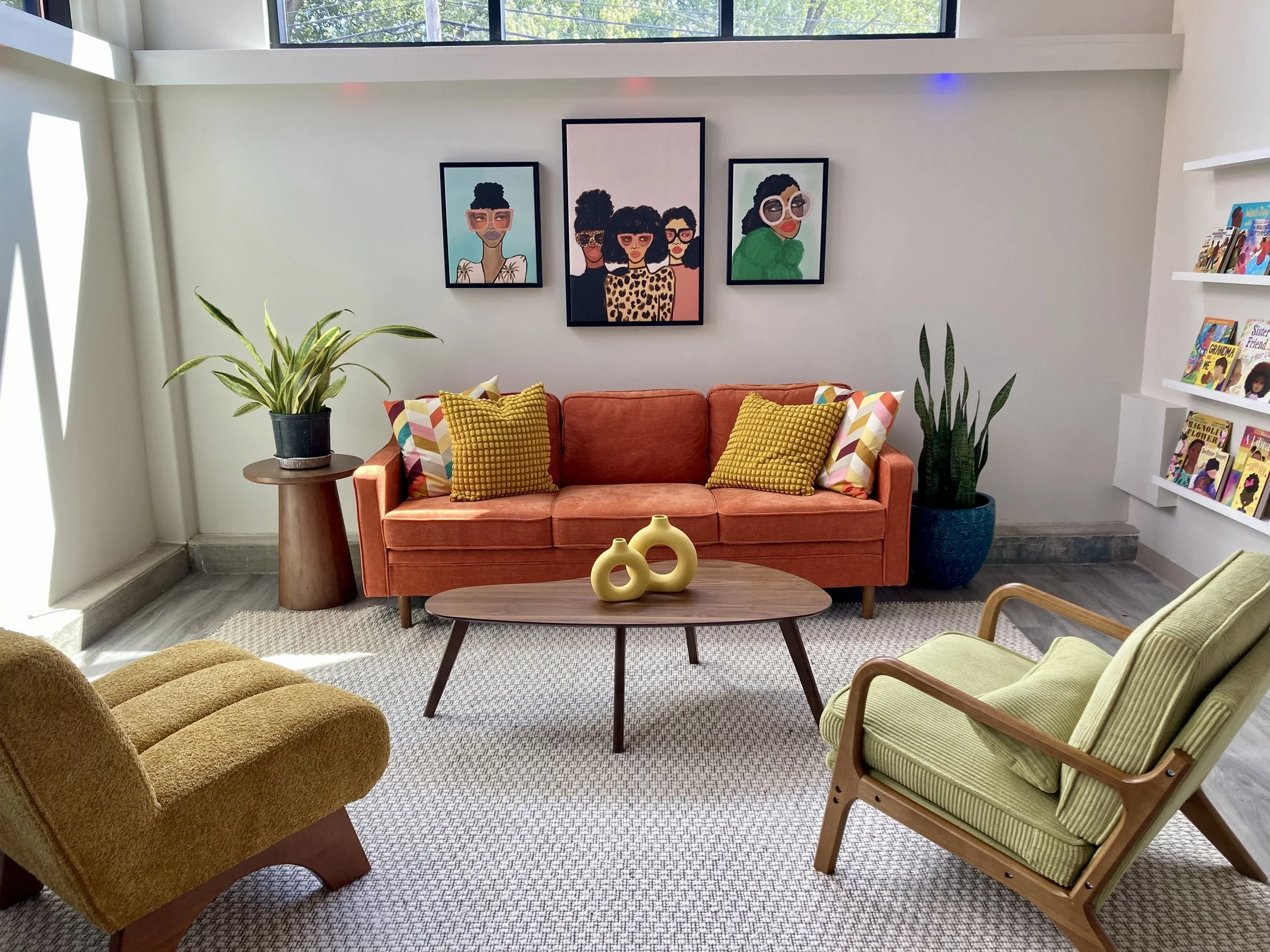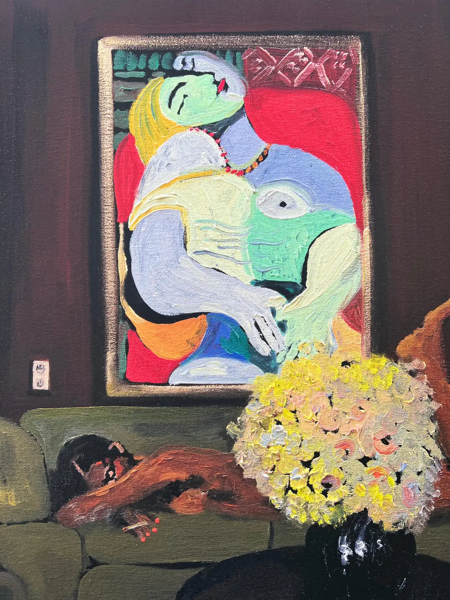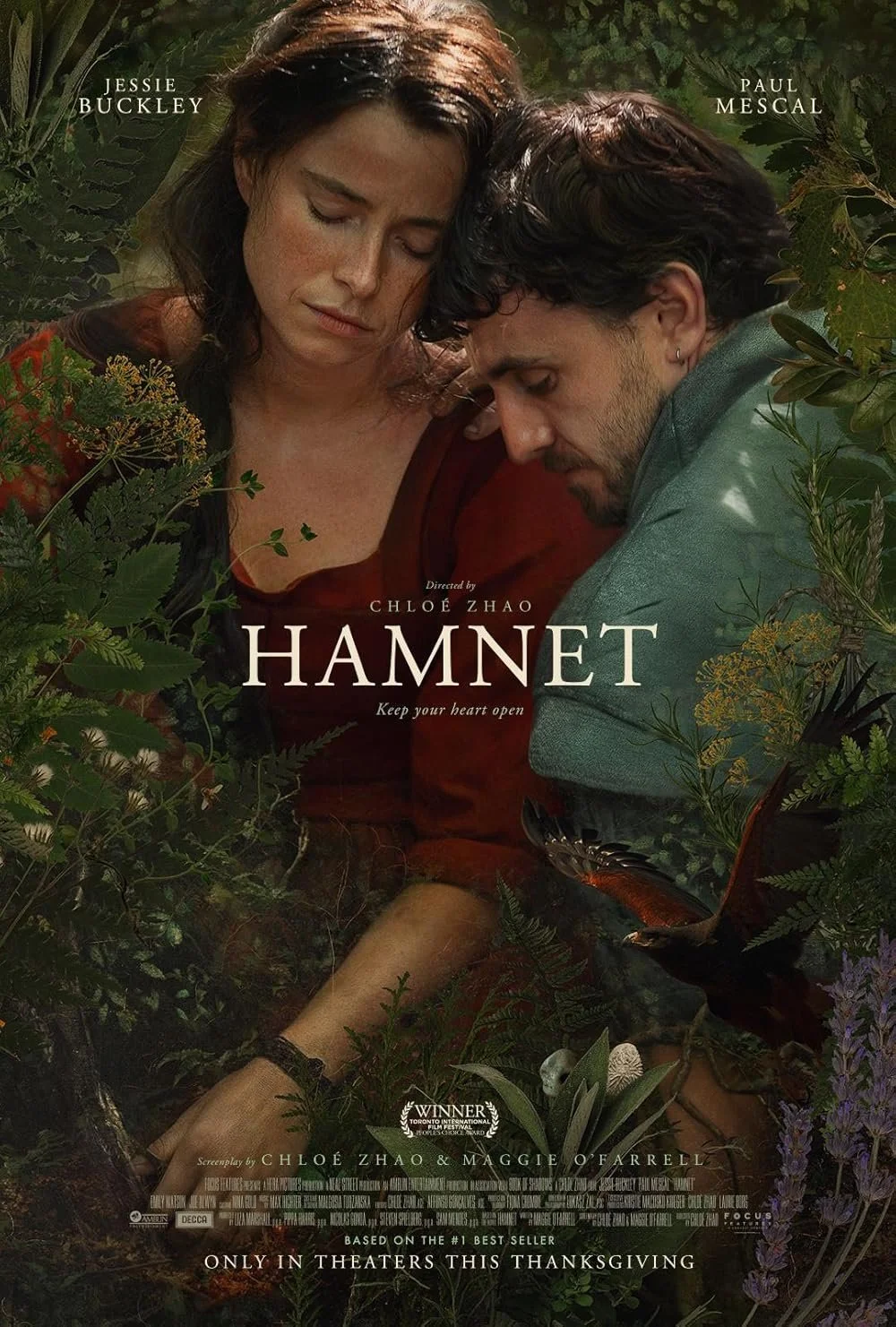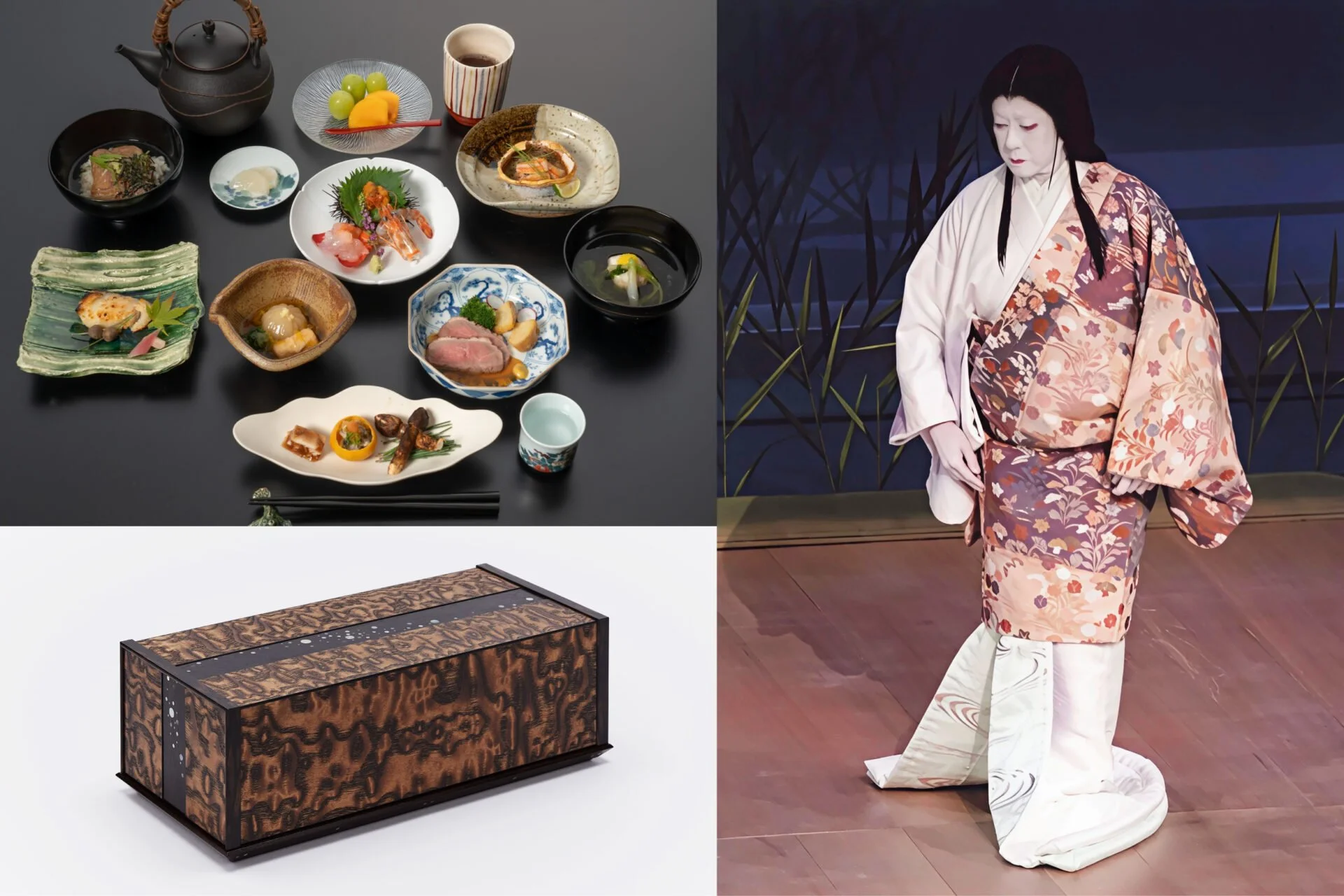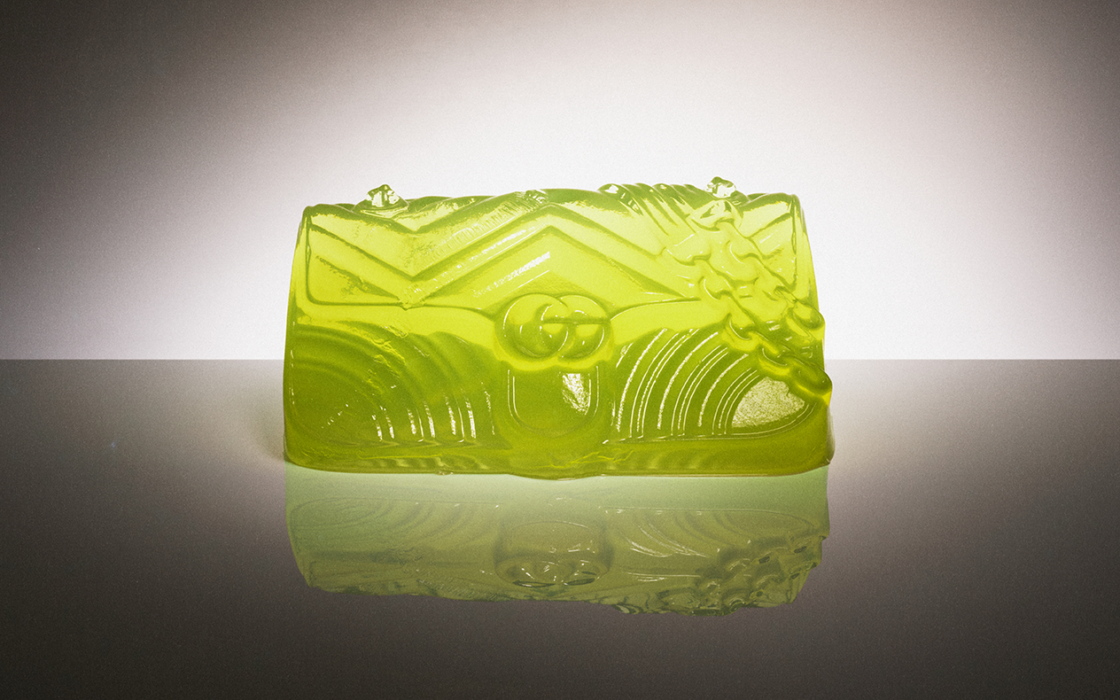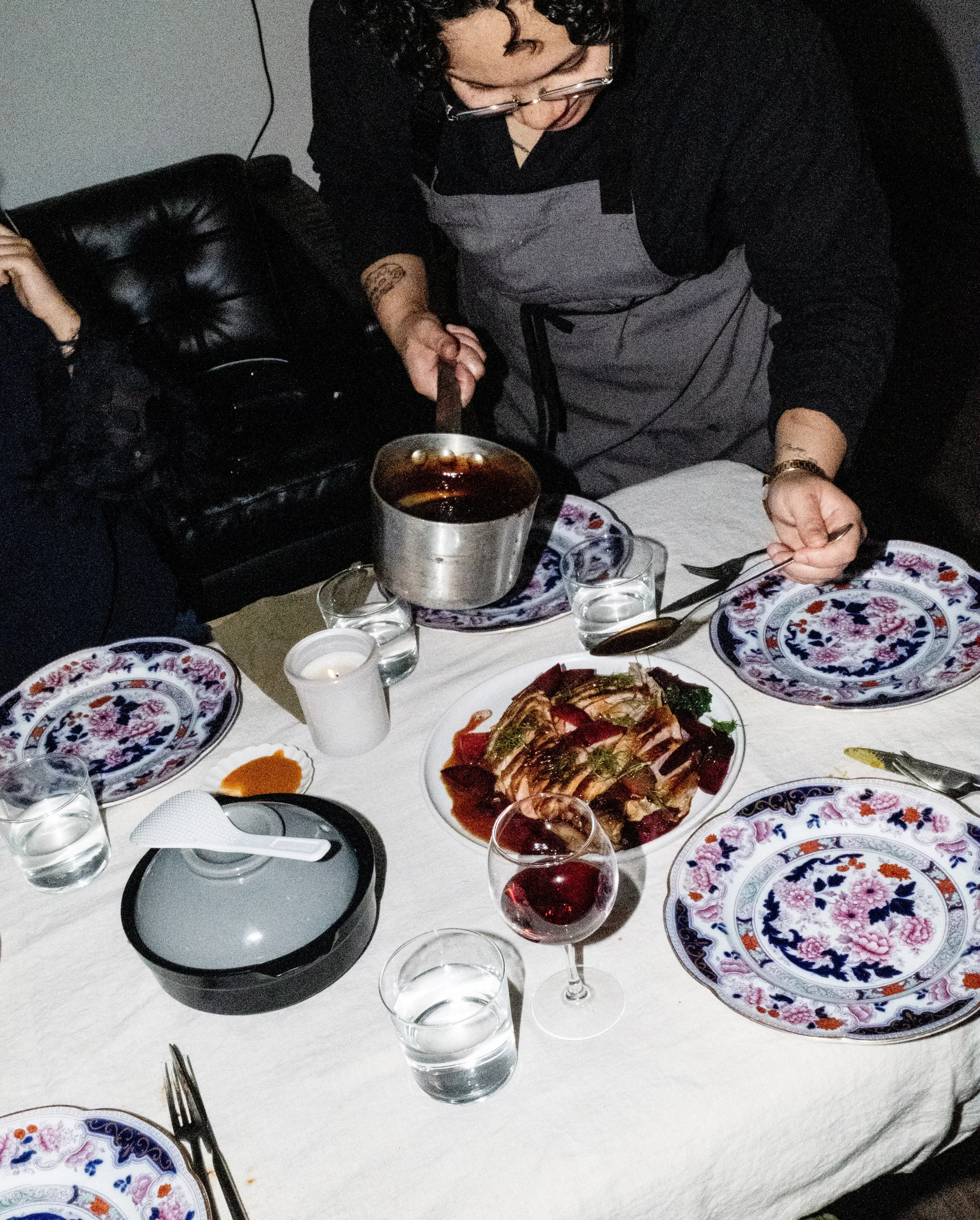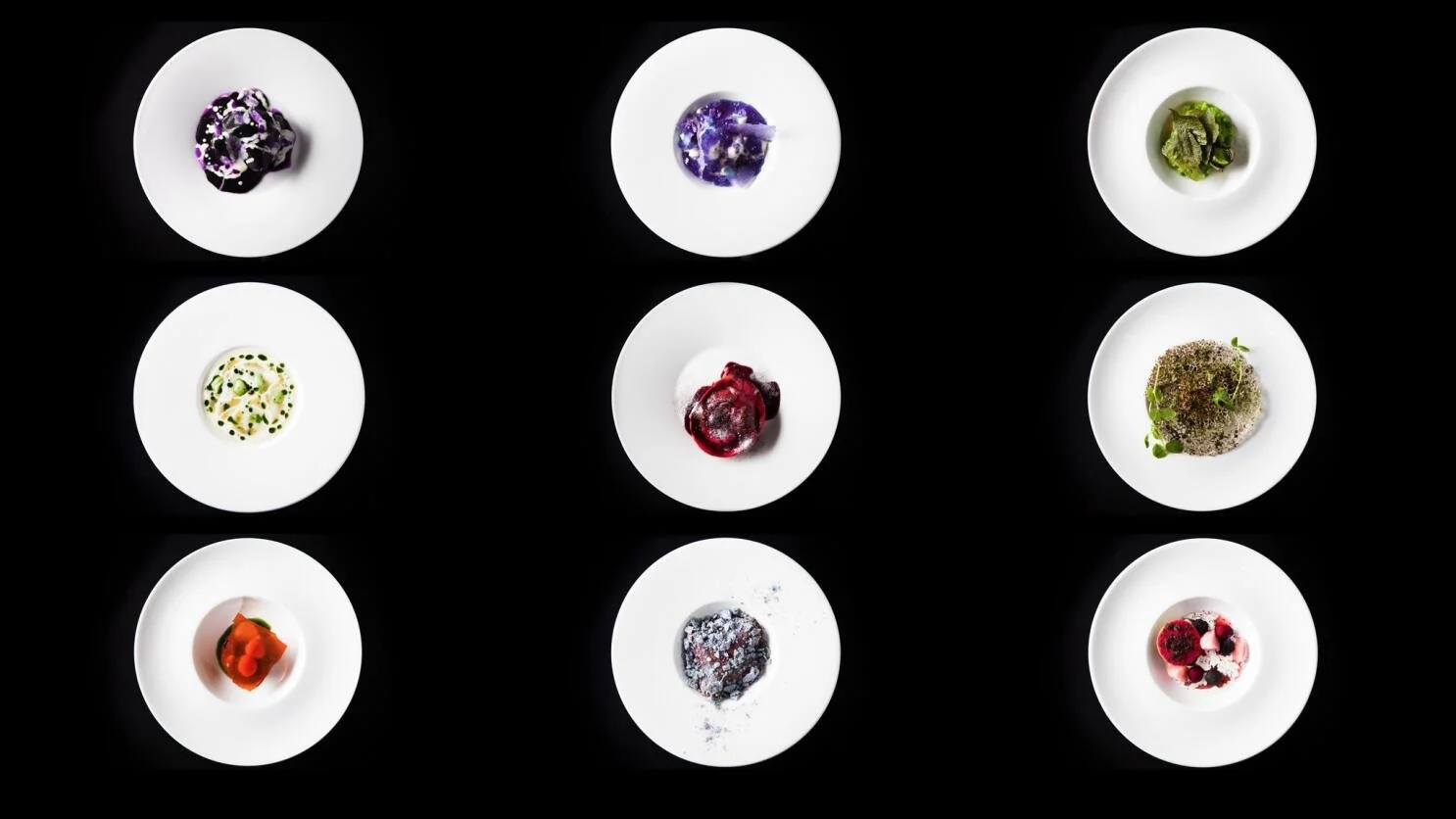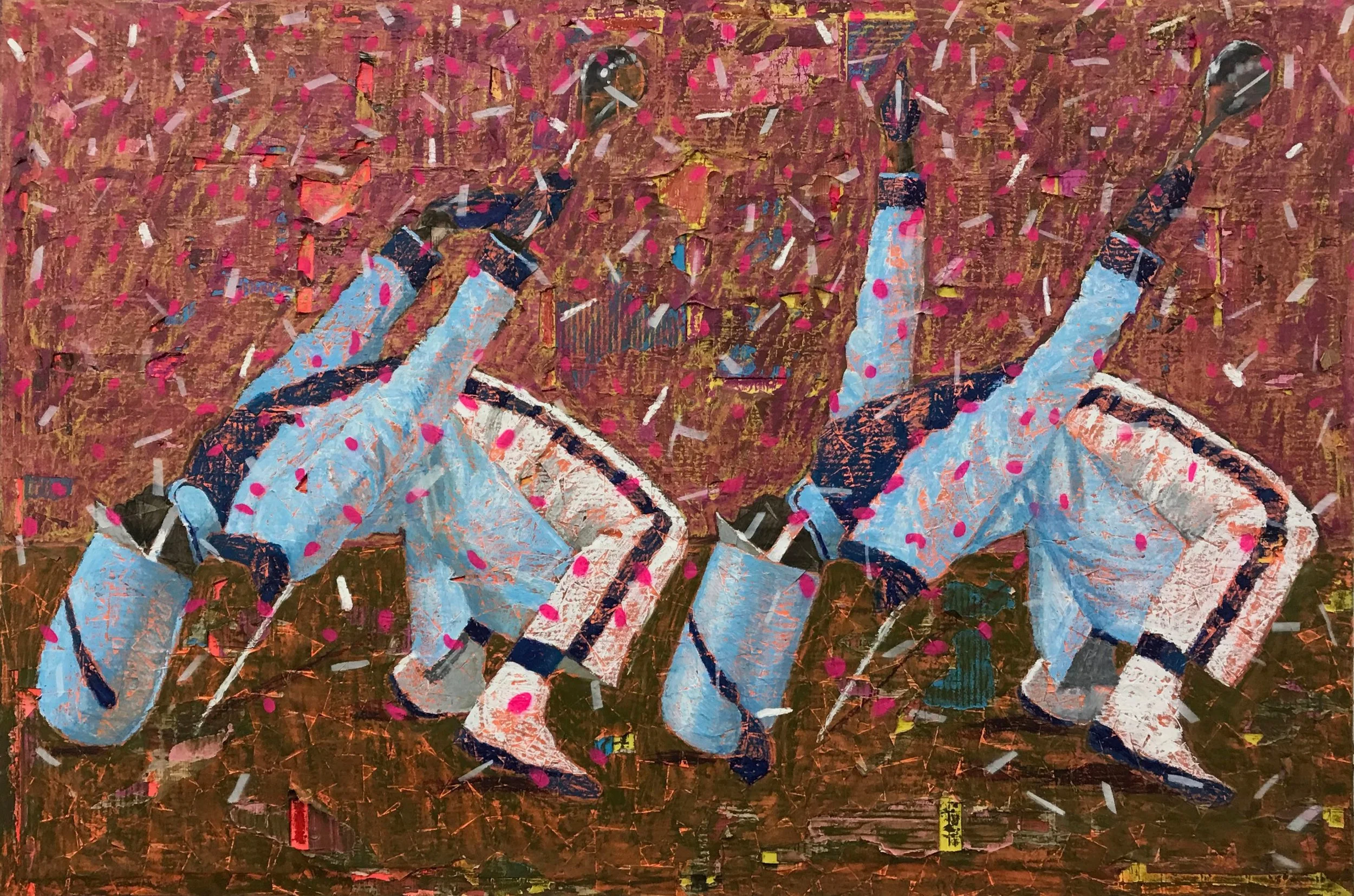The Noise Outside
When the world grows unbearably loud, the act of creating can feel almost defiant. Every era has its noise, whether political, cultural, or existential, and still, artists have returned to the page, the canvas, and the lens to search for coherence in the chaos.
There are stretches of time when the world grows so loud it feels impossible to think, much less to create. There is an undercurrent of constant tension-news, noise, and seemingly endless suffering. Even silence feels politicized. In these moments, the creative act can seem indulgent and out of step with urgency. And yet, time and again, artists have found their most enduring voice in the midst of chaos. Creativity has always found a way to breathe under pressure.
In Europe in the years leading up to World War II, creation was inseparable from crisis. German artist Käthe Kollwitz’s stark etchings captured the crushing weight of grief before language could name it. Her lines– tender, brutal, and human– stood as a witness to loss in the shadow of war. In Paris, Picasso’s Guernica transformed the horror of the Spanish Civil War into a universally resonant monument to suffering, an image that transcended propaganda through its sheer emotional charge. Around him, the Surrealists—Dalí, Ernst, Tanguy—employed dream logic to capture a world coming apart at its seams. Their art was not escapism, but translation: an attempt to represent a collective psychic rupture when reason no longer sufficed, and no one knew where to turn to make sense of it all.
Decades later, in the thick of the Civil Rights movement, James Baldwin wrote The Fire Next Time, holding up a mirror to America as its streets burned. Nina Simone set that same urgency to sound, turning fury and heartbreak into melody. And halfway around the world, in postwar Japan, photographer Shōmei Tōmatsu found intimacy in the ruins, documenting a country in the process of rebuilding its sense of self. The same could be said of artists working through colonial and postcolonial transitions, such as Fela Kuti’s Lagos and Ernest Cole’s South Africa, where sound and image became survival.
What ties these creators together is not simply their response to turmoil, but their insistence on presence within it. To create during unrest is not necessarily to make work about that unrest. Sometimes it means fiercely protecting beauty in a moment that seeks to destroy it. During World War II, Georgia O’Keeffe painted desert horizons that seemed untouched by conflict, yet her restraint was a quiet protest—a belief that attention and beauty still mattered. Toni Morrison once said that “the function of freedom is to free someone else.” Writing, for her, was an act of reclamation, a way of making sense of a world that stubbornly refused coherence.
Even now, artists like Carrie Mae Weems, Toyin Ojih Odutola, and El Anatsui extend this lineage, transforming social fracture into something both visual and meditative. Their work reminds us that art is not merely a reaction; it’s a reassembly. It asks us to see, to listen, to slow down in the face of the relentless.
There’s a temptation to believe that creativity requires calm, that inspiration only thrives in peace. But the truth may be the opposite. The artist’s role has always been to listen differently—to capture the pulse of a world racing forward too fast and translate its chaos into something recognizably human. Maybe the challenge now isn’t to block out the noise, but to reframe it.
The world has rarely been quiet. But creation, in its most essential form, is an act of coherence. Whether in etching, in song, or in the sweep of a brushstroke, art has always found a way to make meaning in the static and to build a moment of stillness inside the storm.
Above: Käthe Kollwitz, Woman with Dead Child, 1903, Line etching, drypoint, sandpaper, and soft ground with imprint of ribbed laid paper and Ziegler's transfer paper.
Interview: L’Oreal Thompson Payton, Journalist, Writer, Owner– Zora’s Place
From the moment she first pressed pencil to paper—at three years old, a spiral notebook balanced on her knees—L’Oreal Thompson Payton understood that language could be a place to live. Over time, that instinct became a powerful compass. As a writer, journalist, and now the founder of Zora’s Place– Evanston, Illinois’ first Black feminist bookstore, she has moved through the world with a steady devotion to representation: writing herself into stories long before she ever saw herself reflected.
Zora’s Place arrives at a moment when publishing’s promises feel suspended; when doors crack open only to narrow again, and whose stories matter is still too often negotiated. Named in homage to author Zora Neale Hurston, the space is deeply intentional. Yet calling it a bookstore feels incomplete. It’s a community hub, a third space, a soft landing for those who have too often been asked to make do without one. Thompson Payton’s curatorial lens extends beyond the page: Black women-owned products, wellness rituals, gatherings that carry joy and protest in the same breath.
In our conversation, Thompson Payton reflects on claiming authorship in an industry that rarely makes room, on kicking doors wider when they shift even a little, and on building a space where Black women are centered without apology. More than anything, she reminds us that community—real, embodied, in-the-room community—is no longer optional. It’s the core assignment.
You've built a life around language as a writer, editor, and now through Zora's Place. How would you describe your earliest relationship with writing, and what has stayed constant about it over time?
I love the wording of that question. In my first book, Stop Waiting for Perfect, in one of the earlier chapters, there is a picture of me about three and a half, sitting on the sofa with my sister, who's probably about six months or so at the time, and I have this spiral-bound notebook, probably wide-ruled, in my lap. And I don't know what I was writing that day. It kind of looks like I'm interviewing her, but she's like six months old and can't talk. And I mean, I'm three, I can't write, but that is the earliest memory I have about writing. When I was six, I wrote this book about dinosaurs in outer space. I've always had my nose in a book since very early on.
“I think even at a young age… I was writing stories to write myself in, to write that representation that I didn’t see.”
There were times when we were in the car driving home from somewhere, and I would use the headlights from the car behind us to read my book. Books were always a place to escape. And even as a child, I recognized the lack of diversity and representation in a lot of those books at the time. I love Berenstain Bears. I loved Sweet Valley High, Goosebumps. I loved all of those, and didn't see little Black girls in those stories. And so I think even at a young age, I don't think it was necessarily a conscious thing, but I was writing stories to write myself in, to write that representation that I didn't see.
And that's been the through line and everything that I've done, from elementary years to high school. Through being the editor-in-chief of the student newspaper, through the internships I've had and other writing-specific roles in newsrooms and even nonprofits, and now as an author, representation has always been top of mind. I wanted to be editor-in-chief of a teen magazine because I didn't want any other little Black girls to feel the way that I did, which was literally praying to God to make me white.
What was the spark that led you to create Zora's Place? Did it begin as a response to something missing in the literary world or as a natural extension of your own creative community?
A little bit of both. So in 2019, a couple of friends and I were in a book club together, and I used the term book club very loosely, because it was kind of a very much BYO book club where we read different books, and then we just met on Zoom to talk about it.
“Zora’s Place is more than a bookstore. It is meant to be a community hub.”
I wasn't even back in full-time journalism yet. I was still in nonprofit PR and just putting the idea on the back burner. And since then, since becoming an author myself, frequenting the independent bookstores that we have here in Chicago– I love Call and Response down in Hyde Park. Courtney, the owner, has been an amazing resource for me during the process of opening my own store, and I believe Evanston deserves this, too. There weren't any Black-owned bookstores. I didn't want to drive 45 minutes to Hyde Park every time I wanted to support a Black woman-owned bookstore. Being the firstborn daughter, an overachieving millennial like that I am, I decided that I should do something about that.
The crowdfunding campaign took off, and now, especially in this moment in time and this political climate, I tell everyone that Zora's Place is more than a bookstore. It is meant to be a community hub. It’s rooted within the Aux Wellness Collective that supports the mental, physical, financial, spiritual, and emotional health of everyone, but especially Black women.
And I think though, as a Black woman author myself and knowing from publishing how we are often pushed to the side, I was like, no. If I'm gonna do this, I'm gonna stand 10 toes down and make this about Black women. Period. And so 99.9% of our books are written by Black women. There are a couple of children's books written by a few good men, because our little boys need to have books that feature them, too.
And then, in naming it after Zora Neale Hurston, Their Eyes are Watching God is my favorite book of all time. Zora's really a pioneer in her own right. And so I wanted this to pay homage to her. And even beyond the books, all of the sideline items that we have, the scrubs and the nail polish and the puzzles, are all Black women entrepreneurs. Half of whom are local to the Chicagoland area. So everything is very intentional– when you come in here, there's a peace of mind of knowing that you are supporting a Black woman-owned business.
The publishing industry has changed in recent years. Shrinking opportunities, fewer editors of color, and a shifting idea of what's considered marketable. From your perspective, what are the forces shaping that landscape right now?
There was a blip in 2020. Of course, we all know what happened in the summer of 2020. The racial reckoning also happened to be when I signed with my previous agent. And I like to think that is because my book is good and I'm a great writer and all of those things. I believe that that is true, and there was a moment in time where across industries and publishing especially, I think people were like, “Oh my gosh, we need diverse voices.” And so everyone was rushing out to find their Black author, right?
I do think that two things can be true. And as an author, I don't want to take advantage of that, right? I didn't give myself the book deal or sign myself to an agency. When the door opens an inch, I'm gonna kick it down and step all the way in, which is what I have done.
When I was shopping around my infertility memoir, I mutually parted ways with my previous agent because she wasn't sure that it would sell. There were a lot of naysayers because memoir itself is a hard category to break into. And then I think as a Black woman, especially, unless you're a celebrity or public figure, there were a lot of discouraging notes from the people in the industry. And the thing about me, though, is I'm a Scorpio. If you tell me that I can't do something, I'm gonna make it my life's mission to prove you wrong.
There’s a long history of trying to minimize, reframe, or altogether erase Black stories in publishing and media. How do you see your work, both in your writing and with Zora's place, as engaging with this moment in time?
Yeah, no, you're not ignoring us. That was very intentional, too, in the title of my memoir. So for Infertile Black Girl (Payton Thompson’s in-progress memoir about her experience with infertility), there were two original titles that I was working through, one of which was “Infertile Ground”. When people say they hear the “voice of God”, I feel like mine has always been these kinds of whispers and nudges– and the voice that day was: “Infertile Black Girl”. And that was it– because that says everything.
My experience is unique, going through infertility as a Black woman. Wellness in general is a very white space. By naming that and not shying away from it, that means everything to me. It all goes back to representation with me. And there are women that I've met in different support groups, other Black women who've shared the same sentiment about infertility on its own, which is already kind of isolating. And then, when you throw being someone from a marginalized identity on top of that. The isolation just compounds.
Community is a through-line in your work, not just who you write for, but who you create with. What does community mean to you in this moment?
Community is everything, especially in this moment in time. I had a hunch after last year's election that community was going to be even more important. And that was really going to be a theme in 2025. And especially in-person community, I found that in every single group that I'm talking to, people are craving that community and connection.
That's why on the website and every time I talk about Zora's Place, I say it’s more than the bookstore– it’s also a community space because we don't have a lot of third spaces. I want this to be a space where people feel comfortable coming here to study or just have a quiet place to be. At our soft opening, someone from the community bought a book, and she asked if it was okay if she sat and read. Of course, I said yes– that's what it's there for.
I want to create a Black feminist book club. I want to create a Black romance book club. This is why we have a romance section as well, because that is also revolutionary. Black Romance is a form of protest. And so it's very intentional. And the products that we have– having the scrubs, the candles, the soaps, and the nail polish, all of that is part of your health and wellness and self-care, and making time for yourself as well. So, I feel now, and for the foreseeable future, it is our number one charge.
Learn more about L’Oreal and her work here, and Zora’s Place here.
Portrait of L’Oreal Thompson Payton by Joerg Metzner & images of Zora’s Place by EE Bauer Photography
Footnotes: A Brief History of Black Women & Print Culture
Black women have always built literary ecosystems when existing ones refused them. Their publishing, printing, and distributing have been less about capital and more about survival, memory, and community.
Kitchen Table Press (1980–1996)
Founded by Barbara Smith and Audre Lorde, Kitchen Table became an urgent corrective to the white feminist publishing landscape. It didn’t just publish books — it published voice, making space for women of color to speak in their own language, on their own terms. It was understood that representation wasn’t a luxury; it was infrastructure.
Black Feminist Bookstores of the 1970s–90s
Spaces like Sisterwrite and Umoja Bookstore served as literal and figurative shelter. They were hubs for study groups, food drives, childcare swaps, and quiet resistance. Long before algorithms, these spaces curated the canon by hand, offering the kind of hyperlocal curation streaming culture can’t touch.
The Harlem Salons
In the 1920s, living rooms became publishing houses. Zora Neale Hurston, Jessie Redmon Fauset, and Georgia Douglas Johnson circulated manuscripts, shared edits, and built professional networks. These salons transformed domestic space into a cultural engine, insisting that Black women’s intellect was worthy of architecture.
Independent presses of the 2000s
As conglomerates grew risk-averse, Black women responded by launching small presses, chapbooks, zines, and community-run imprints. Their work wasn’t “niche”; it was archival, documenting the lives the market shrugged at. Many of these projects became primary sources in today’s scholarship.
Across every decade, the pattern holds: when the door is closed, Black women build their own rooms, invite others in, and leave the lights on. The lineage is less linear and more like a constellation: bright, scattered, and impossible to forget once you’ve seen it.
Zora’s Place doesn’t imitate that tradition; it extends it– intentionally, with its own focus. And with the same belief: that literature isn’t merely consumed, it’s lived, together.
The Quiet Behind the Ideas
Our current moment prizes speed, visibility, and relentless production. The idea of rest has become almost radical. The rhythm of the world insists on acceleration — more content (the clock has to be ticking on this word by now…), more noise, more urgency. Even the creative fields that once prided themselves on introspection have been swept into a cycle of constant output. The artist’s studio has become a livestream, the writer’s solitude a branded productivity tip. To slow down now feels almost countercultural.
But across disciplines, a quiet resistance is forming. One that values slowness not as evidence of lack of ambition, but as an act of preservation. Ceramicists allowing their materials to dictate the pace. Musicians rediscovering silences as composition. Designers moving off the Fashion Week calendar and reclaiming the space and time to concept collections on their own terms. Writers embracing revision not as delay but as devotion. But what if doing less isn’t laziness? What if it’s a quicker path to precision?
Creative rest isn’t the same as withdrawal. It’s not about disappearance or disengagement, but about turning inward long enough to remember why you make things in the first place. The world doesn’t stop pressing in, but rest becomes a way to meet it with more clarity, a kind of interior recalibration. In that stillness, attention sharpens. Work deepens. The noise recedes just enough to hear yourself think again.
This call for rest also sits inside a larger, more fraught cultural moment. The political climate has rarely felt heavier — acute anxiety, injustice, war, and environmental dread have turned collective fatigue into a kind of shared language. The constant scrolling between crisis and performance erodes focus; it’s difficult to feel imaginative when the ground beneath us feels unstable and increasingly porous. For many, rest is not only restorative but necessary for survival, a refusal to let exhaustion define one’s relationship to the world.
Slowing down is a form of intelligence. To resist speed for the sake of speed is to protect nuance, to hold on to complexity when the world demands shallow simplicity. The creative process is a cycle. It’s expansion and contraction, output and retreat. The most resonant ideas often emerge not in the rush of deadlines but in the quiet little pockets between them, when our mind is unguarded enough to wander, and maybe even when we are thinking of something else entirely.
As we move through another season that feels both accelerated and uncertain, there’s value in remembering that to pause is not to lose momentum, it’s to honor process. Rest is the space where perspective realigns, where beauty has time to surface and take a breath. Perhaps the point isn’t to keep up at all, but to keep faith with the work itself: deliberate and unbothered by pace.
Above: Danielle McKinney, Sandman, 2024, oil on linen
Field Notes: Five Cultural Events Defining Fall 2025
Summer has faded, and the creative world has sharpened its focus. This season's calendar is stacked with moments that bridge beauty, intellectual stimulation, and intimacy. Here are five events that caught our eye, and might be worth a journey of your own.
Robert Rauschenberg at Gemini G.E.L.: Celebrating Four Decades of Innovation & Collaboration
Any survey of post-war American art would be woefully incomplete without Robert Rauschenberg (1925-2008). Gemini G.E.L. in Los Angeles presents Robert Rauschenberg at Gemini G.E.L.: Celebrating Four Decades of Innovation & Collaboration, a sweeping centennial exhibition of Robert Rauschenberg’s storied printmaking practice, honoring the artist’s enduring dialogue with the print workshop he first joined in 1967. The artists’ first print edition with Gemini G.E.L., titled Booster, was originally intended to include one single, full-body x-ray, conceived as a “self-portrait of inner man”. Obviously, this was an impossible feat to produce, so the artist and Gemini’s founders decided to scan the artist’s body in six sections to complete the image.
Drawing upon a meticulous curatorial selection of emblematic works—such as Sky Garden from the Stoned Moon series—the exhibition explores the space between paper, ink, found materials, and photographic imagery, evoking Rauschenberg’s restless impulse to expand the expressive reach of print media.
The Los Angeles Gemini G.E.L. exhibit (running through December 19th, 2025 ) is a companion exhibition to Gemini G.E.L. at Joni Moisant Weyl in New York City, with that on view until December 20th, 2025. Both presentations mark the centennial of Rauschenberg’s birth and shine an important light on the 40-year relationship between one of the giants of 20th-century art and the publisher, artists’ workshop, and gallery. geminigel.com
Above: Robert Rauschenberg, 'Booster,' 1967, 5-color lithograph & screenprint,72" x 35 1/2", Edition of 3
38th Tokyo International Film Festival
The 38th Tokyo International Film Festival unfolds in several cinemas across Hibiya, Marunouchi, Yurakucho, and Ginza. TIFF continues to serve as Japan’s preeminent gateway to world cinema, offering a thoughtfully edited mix of gala premieres, competition films, and regional showcases.
This year’s opening film is Climbing for Life (Junji Sakamoto), and the festival will conclude with Hamnet by Chloé Zhao—framing a boundary-crossing arc between Japanese auteur cinema and global storytelling. As filmmakers, critics, and cinephiles gather, the festival reaffirms its dual role: as a showcase of cinematic excellence and as a hub for cultural diplomacy, creative risk-taking, and film industry renewal. From October 27 to November 5, 2025.
Leslie Hewitt: Achromatic Scales
Leslie Hewitt: Achromatic Scales, the first U.S. exhibition to bring together three of the artist’s ongoing series—Riffs on Real Time, Chromatic Grounds, and Riffs on Real Time with Ground– is now on view at The Norton Museum of Art in West Palm Beach. Through a carefully calibrated orchestration of layered photographic images (including personal snapshots of family and friends), archival ephemera, and abstract photograms, Hewitt probes how images inhabit time, memory, and space.
Hewitt references Black literary touchstones and post-Civil Rights era pop culture, while adding her voice to art historical traditions, such as still life, minimalism, and conceptualism. With Hewitt serving concurrently as the Norton’s 2025 Artist-in-Residence, the show deepens its resonance by intertwining studio practice with public engagement, offering a rare opportunity to experience new works and evolving ideas in tandem. On view through February 22, 2026. norton.org
Above: Riffs on Real Time with Ground (Green Mesh), 2017, Digital chromogenic print, silver gelatin print, with custom wood frame, Unique, 41 x 91 in. (104.1 x 231.1 cm). Courtesy of the Artist and Perrotin. Photo: Guillaume Ziccarell
Frankfurter Buchmesse 2025
Messe Frankfurt hosts the annual Frankfurter Buchmesse, the premier gathering for the global publishing community, a dense intersection of ideas, rights, and cultural exchange. This year’s edition underscores its evolving mission as a bridge between the written word and film/streaming media, with Book-to-Screen Day spotlighting adaptation, cross-industry partnerships, and narrative translation across forms. With curated author programs and a robust hybrid platform, Frankfurt 2025 highlights the ever-evolving terrain where text, image, voice, and screen converge. From October 15 to October 19, 2025. buchmesse.de
Kōgei Dining 202
In November, the MOA Museum of Art in Atami hosts Kōgei Dining 2025, an immersive celebration of traditional Japanese craftsmanship (“工芸“ or Kōgei), cuisine, and performance. Over five days, guests dine on seasonal dishes served on tableware crafted by Living National Treasures and master artisans, with each piece a quiet collaboration between maker and meal.
The experience extends beyond the table, with daily artist talks exploring the philosophy and process behind Kōgei, and intimate Buyō performances by Bando Tamasaburo on the museum’s Noh stage. Kōgei Dining is an act of reverence for the handmade, the well-prepared, and the fleeting beauty of a shared moment. From November 15th to 19th, 2025. moaart.or.jp
Additional photos courtesy of Tokyo Film Festival, Frankfurter Buchmesse, & MOA Museum of Art
The Transient Table: Food as Performance Art
Food has always been a transient art form. It’s made in a moment, savored in another, leaving only memory and story to hold it firmly in place. The impermanence is where the power of food lies. A meal is fleeting, but its impact can ripple far beyond the table, shaping how we see culture, creativity, and most importantly, community.
Increasingly, chefs and artists are experimenting with the dining experience itself, transforming meals into performances, provocations, and poetry. They are dinners as we know them, but they are also conceived as living works of art, where what’s on the plate is inseparable from the atmosphere, the staging, and the intent.
In London, Bompas & Parr have transformed food into a fairy tale-coded, multi-sensory theater experience. Known for their whimsical installations– think immersive jelly banquets, a breathable gin cloud, or a glow-in-the-dark ice cream parlor– the duo create experiences that blur the line between gastronomy and spectacle. Their work asks diners to reconsider what consumption even means, proving that food can be just as radical a medium as paint or marble. The current situationship between fashion and food has reached Bompas & Parr, with a recent campaign for the August 2025 launch of Gucci’s new GG Marmont handbag. The accessory reimagined as high-concept gelatin.
If you ever wanted to dine en plein air, in the midst of something resembling a Robert Smithson earthworks piece, there’s Jim Denevan. Denevan’s Outstanding in the Field tour has transformed landscapes into dining rooms for more than two decades. Long, meandering tables stretch through orchards and farms, sometimes bending to echo the natural contours of the land. Guests are invited to share dishes sourced from the very ground beneath their feet, often without knowing the menu until the plates appear. The table itself becomes a sculpture, the land a quiet collaborator, the meal an ode to impermanence.
Other expressions are decidedly more intimate, like Chynna Banner’s Tomboy Supper Club in Seattle. Born from her apartment kitchen and now unfolding in pop-up spaces, Banner’s dinners reinterpret Filipino food through the lens of identity, third-culture experience, and belonging. They are gatherings where the menu shifts with each event, designed not just to be eaten but to provoke connection through fermentations, playful reinterpretations, and allergy-friendly adaptations that mirror the fluidity of modern heritage. The glow of her dinners is less about polish than atmosphere: flickering candlelight, crowded tables, laughter caught in photographs that somehow feel nostalgic.
An honorable mention falls into the category of projects that lean fully into art and the grandeur of its legacy institutions. In 2016, Craig Thornton’s Wolvesmouth: Taxa at the Museum of Contemporary Art in Los Angeles transformed the gallery into an immersive dining space where sculptural installations, sound, and light were as crucial an element as the food itself. Plates emerged as part of a larger visual and sensory metaphor, with purple-skinned dumplings placed against sculptural backdrops, menus intertwined with shifting light. Thornton’s dinners were less about satiation than sensation, existing somewhere between performance and ritual, made meaningful because they were never meant to last.
The connective tissue uniting these experiences is the insistence that impermanence itself is the art form. When meals are relentlessly photographed, shared, and stored for digital eternity, these happenings privilege in-the-moment presence over permanence. They resist documentation and instead reward memory, asking guests to experience food as something fleeting, embodied, and unrepeatable.
These dinners matter because they remind us that creativity often thrives in the momentary, passing much too quickly for us to grab a phone to capture. A table set in a field, a culturally rich supper club hidden in an apartment, a collaboration that flickers for a single night, an art installation that feeds you as much as it disorients you—each reveals how the act of eating can be transformed into something poetic and temporary. Sometimes the most radical thing we can do with flavor is to let it disappear.
Photos courtesy of Bompas & Parr, Jim Denevan/Outstanding in the Field, Tomboy Supper Club, and MOCA Los Angeles
What Agnes Gund Understood About the Power of Art
While many art collectors set about building empires of ownership, Agnes Gund spent her life building bridges. Gund, affectionately known as “Aggie” by those who were close to her, instinctively knew that collecting is not simply about acquiring beauty, but about widening the aperture of who gets to be seen, heard, remembered, and valued.
Before her death on September 18th at the age of 87, Gund pulled the levers of her privilege and resources to support women, artists of color, and those working beyond the narrow perimeters of the mainstream art world. Her storied collection was an expansive survey of modern and contemporary art, broadcasting a vision of art as a more democratic space.
The painting you see above played a pivotal role in shaping Gund’s place as a powerful changemaker in the art space. In 2017, Gund decided to sell Roy Lichtenstein’s 1962 Masterpiece for $165 million, making it one of the most expensive artworks ever sold by a living collector.
But instead of banking the windfall, she used it to seed the launch of the Art for Justice Fund, an initiative dedicated to dismantling mass incarceration in the U.S. During its run (the organization closed its doors in 2023), the fund granted well over $100 million to community-led organizations and artists who are reimagining a more equitable justice system. With that single act, Gund proved that art can have power beyond the walls of a museum.
Her vision extended beyond philanthropy. She spent her life pushing institutions to be more inclusive, whether through her longtime role at the Museum of Modern Art, her work funding scholarships for young artists, or her tireless insistence on acquisitions that expand on the narratives that museums share with the world. She saw art as an active responsibility, not a passive blue-chip luxury.
Gund’s legacy is multi-layered and is sure to be explored in the coming weeks and months, with her influence felt not just in the halls of MoMA, but in communities around the country. She reminds us that creativity underpins a fully realized society.
Suppose we want a better society– one that is more compassionate, more intellectually aware, and more connected. In that case, it’s important to realize that the path runs straight through artists’ studios, restaurant kitchens, performance stages, and the solitary quiet of writers’ rooms. Agnes Gund knew that art was not separate from the realities of our world, but deeply entwined with them.
Footnotes on Collecting Art
This edition of Bureau Footnotes explores the art of building a meaningful collection, featuring Yolonda Ross and her focus on Black and Brown artists. Discover insights into her collecting philosophy and the artists who inspire her work.
One of the first elements to keep in mind when starting an art collection is cultivating a solid idea of what kind of art you want to collect and why. Yolonda Ross’ art collection centers the work of Black and Brown artists, and she has slowly built a collection that participates in the ongoing conversation about race and identity. Click below to learn more about some of the artists in her collection.
Derek Fordjour
Derek Fordjour, Backbend Double, 2018, acrylic, charcoal, oil pastel, and foil on newspaper mounted on canvas
Derek Fordjour creates art that explores themes of race and identity, often incorporating various media on canvas.
Rhonda Brown
Rhonda Brown, Royal II, 2020, acrylic on canvas
An artist and art world professional, Rhonda Brown specializes in advising individuals and institutions on building thoughtful art collections with a focus on Black artists.
Cey Adams
Cey Adams, Paramount/Kool-Aid, 2015, handmade fiber paper, magazines, and acrylic on canvas
Cey Adams emerged from the downtown graffiti movement of the 80s and became the founding Creative Director at Def Jam Recordings, shaping the visual culture of Hip-Hop.
Violeta Sofia
Violeta Sofia, Dutch Master, 2024, mixed media
Award-winning artist, photographer, and activist Violeta Sofia is deeply influenced by her multicultural upbringing, explores themes of identity, diversity, and human connection with a focus on female inclusivity and representation.
Interview: Lourdes Martin, Journalist
In our inaugural micro-interview, journalist Lourdes Martin reflects on how her popular blog, Please, Do Tell, evolved from personal travel reflections into a powerful platform focused on human rights. Martin shares how intentional travel can offer a vital creative and emotional reset, uncovering the deeper stories that objects can tell about the world.
New York-based journalist Lourdes Martin reflects on the recent editorial pivot in her popular blog, Please, Do Tell, which launched as a collection of personal travel reflections and has now evolved into a powerful platform with a sharp focus on human rights. Martin also shares how she navigates the complexities of global issues, details the transformative power of intentional travel, and uncovers the objects that can tell a deeper story about the world.
Can you share the story behind Please, Do Tell? What inspired the launch initially?
After earning my degree in International Human Rights, I found myself emotionally drained. The work was important—deeply meaningful—but I realized I didn’t have the bandwidth to stay immersed in such heavy issues day in and day out. I needed space to breathe, to create, and to reconnect with a different part of myself. The blog began as a personal space for reflection and writing, but it quickly evolved into something larger: a place where others could slow down with me and discover people and places around the world through a more thoughtful lens.
It wasn’t about fast itineraries or bucket lists—it was about staying long enough to learn a neighborhood’s rhythm, to meet locals, and to find meaning in the quieter moments of travel. Please, Do Tell became a way to share not just where I was going, but how I was seeing—and who I was meeting along the way. Over time, it grew into a community that valued connection, curiosity, and the belief that travel, when undertaken slowly and with intention, has the power to restore and transform.
The editorial mission of Please, Do Tell has shifted in our current political landscape to train a lens on human rights. Can you explain your thought process with that shift and how you plan to build on it going forward?
Please, Do Tell has always been rooted in storytelling that bridges place, identity, and culture. But lately, I’ve felt a strong pull back to my roots in international human rights—I hold an M.S. in Global Affairs with a focus on human rights, and that lens has always shaped how I see the world. Maybe it’s because of what’s unfolding here in the U.S. and around the world—the erosion of democracy, the rise in authoritarianism, the targeting of migrants and marginalized communities.
It no longer feels sufficient to tell beautiful travel stories without also reckoning with the political and human realities shaping those places. The stories I want to tell now are still grounded in curiosity and connection, but with a sharper focus on justice, resilience, and what it means to belong. For now, I plan to continue writing about these issues via my newsletter on Substack and for other media outlets.
For many people in the U.S., it can feel like we’re living in the upside-down. What are your thoughts on how travel can alleviate some of the unease and perhaps even provide a bit of emotional and creative reset?
One of the most healing things about travel, for me, is how it pulls you out of your everyday bubble and drops you into a much bigger world. When you’re stuck in the same routines and the constant noise of the news cycle, it’s easy to forget that other ways of living exist. But stepping into a new place—hearing a different language, observing the rhythm of someone else’s day, noticing what’s sacred or ordinary in another culture—can shift something in you.
It reminds you that your reality isn’t the only one. That the world is layered and full of beauty, even in hard times. That perspective alone can be grounding, even healing. It creates space for awe. And sometimes, that’s exactly what we need to feel like ourselves again. Last summer, my husband and I spent seven weeks in Mexico City, and I came home completely reset—emotionally, creatively, spiritually. I felt refilled. Reoriented. The noise was still there, but I felt lighter.
The theme of this issue is Objects– are there things beyond the basics that you always travel with?
Beyond the basics, I always pack a notebook– it’s my way of catching whatever rises to the surface while I travel. Thoughts, passing observations, fragments of conversation… things I might not even notice at home suddenly feel rich with meaning. Being in a new place always stirs something loose in me, and writing helps me sort through it. The notebook becomes a kind of companion—part memory-keeper, part sounding board. Travel has also been a powerful creative trigger. New surroundings, new smells, new textures—they always spark fresh ideas.
Your blog used to include a well-edited shop called Recuerdos, where you featured items from around the globe. Besides typical souvenirs, what objects do you think can more deeply tell a story about the people of a country?
Yes, I launched Recuerdos during the pandemic as a way to help people travel from home, through objects that tell a deeper story. Beyond typical souvenirs, I’ve always been drawn to things that carry the weight of daily life and memory. Souvenirs aren’t just keepsakes—they’re part of your travel story, a tangible way to revisit a place long after you’ve left.
A hand-embroidered pouch from Chiapas, a bar of chocolate made by Indigenous women in the highlands, saffron and spice blends from Afghan women reclaiming their livelihoods, a beeswax candle poured by Syrian refugees, or a clay cup shaped in the hills of Oaxaca—these aren’t just items. They carry scent, texture, and story. They remind us that even in the hardest circumstances, people create beauty. Every object holds a little resilience. A little soul.
Learn more about Lourdes and read her newsletter, Please Do Tell, here. Above, postcards from Martin’s journeys throughout Mexico.


